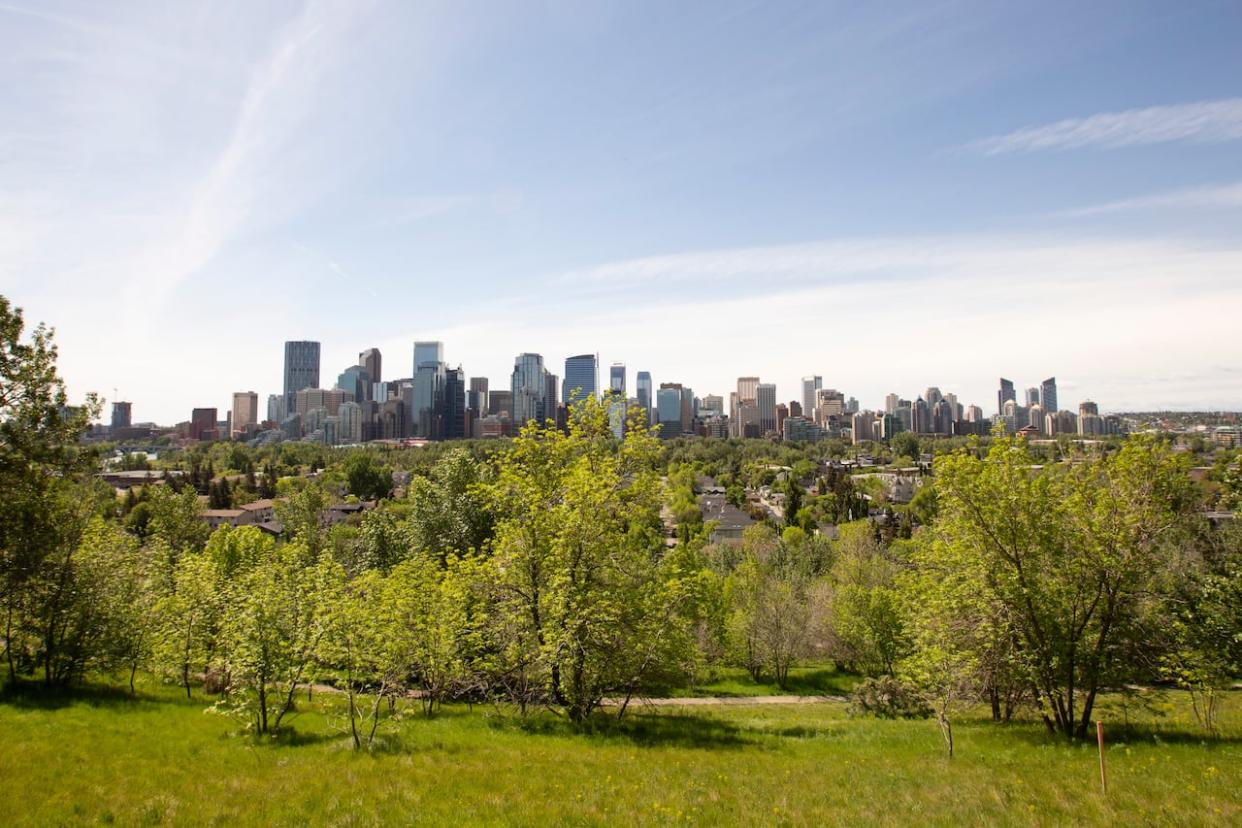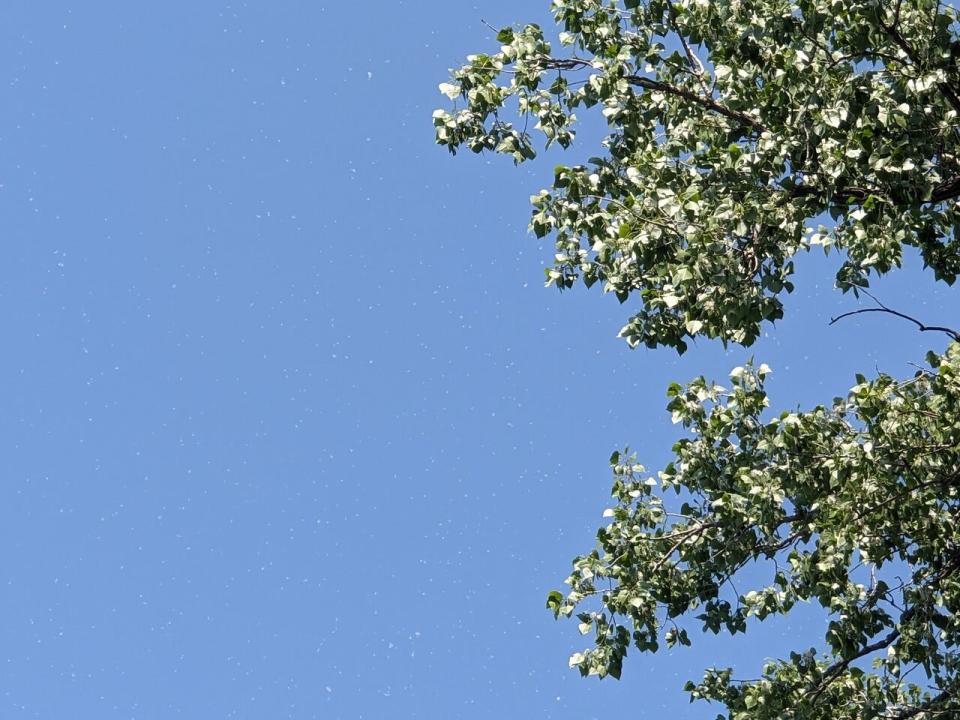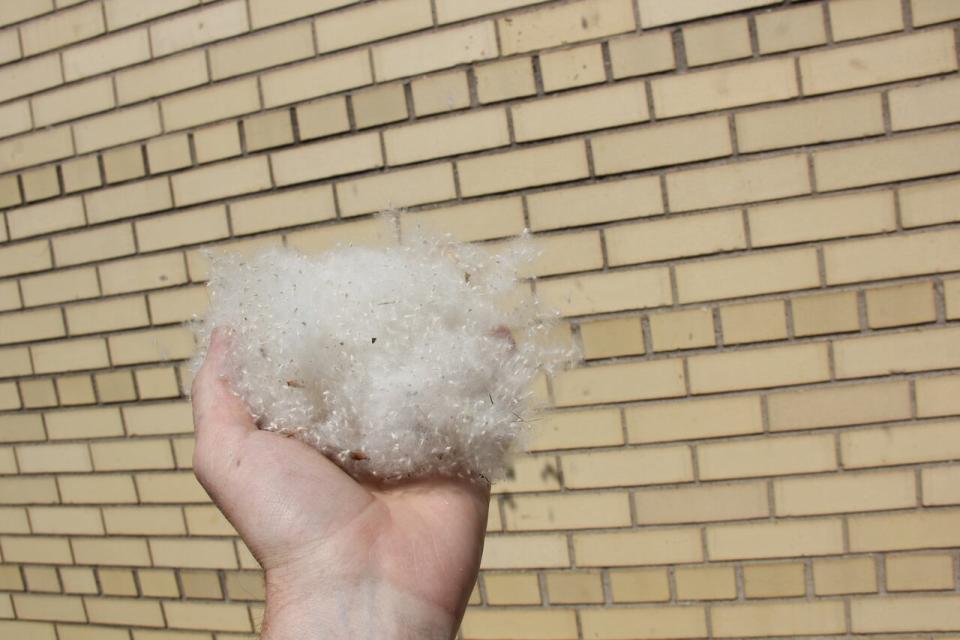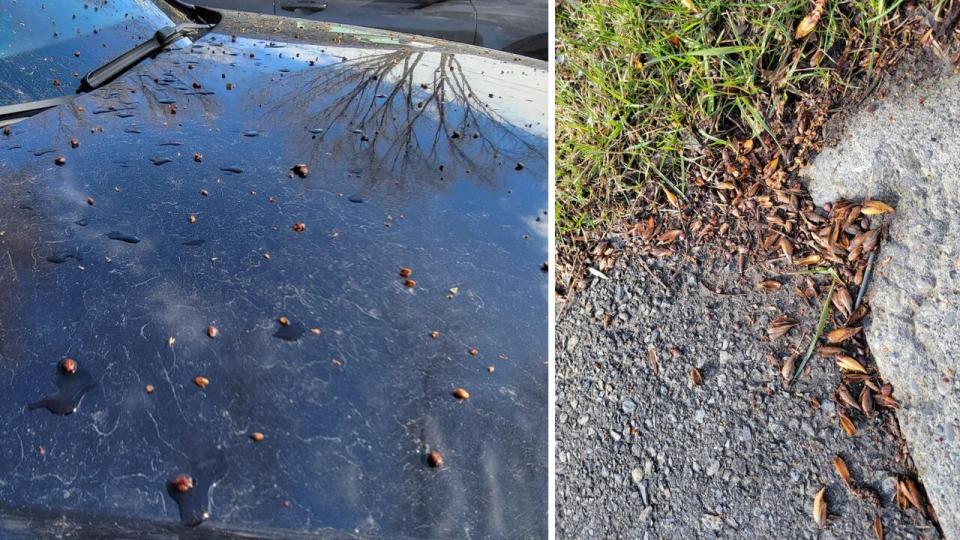Why poplars are so popular in Calgary — in number, that is

They are hardy trees capable of handling the region's most difficult weather conditions — and provide sought-after shade for citizens on a hot day.
But poplars have also been maligned (unfairly, it turns out) for making noses run and eyes water, while frustrating people with sticky seeds that can stain clothes.
Whether you love them or hate them, poplars have become a big part of Calgary.
Around 70 years ago, there were only seven kinds of shade trees that were able to survive in Calgary's unique climate. Four of those were species of poplars.
Today, the city says poplars are the "backbone" of Calgary's urban forest, making up roughly 18 per cent of the city's tree population and one of its top three tree species.
And every year for a few days in June, poplar fluff floats across the city. In preparation for poplar fluff season, CBC's This is Calgary podcast invited master arborist Gerard Fournier on the show to explain how the city ended up with so many poplars.
He also addresses why poplars aren't to blame for people's allergies.
"Incidentally, the word 'popular' comes from the root word — no pun intended — for poplar, [which is] populus," Fournier told podcast host Anis Heydari.
So why are poplars so popular? In number, anyway.
"There aren't a lot of trees that we have available to us living where we live. We live in one of the most hostile regions," said Fournier.
"Poplars have been here forever and it's one of the most adaptable trees on the face of the planet."
Fournier says it's a unique cocktail of factors.
Because of Calgary's fluctuation between extreme hot and extreme cold, plus its famous chinooks, mixed with southern Alberta's dry landscape and high altitude, the environment doesn't necessarily lend well to growing trees.
"[A] maple or oak tree will wake up in the middle of the winter during a chinook," said Fournier. "Its juices will start flowing and the buds will start swelling, and then bam — the next week it's -30 C again, and the buds freeze and the tree dies."

Poplar cotton is the white hair-like fibre that comes off female trees each spring. The fibre helps carry seeds far and wide so they can germinate and grow — but one expert said it can also carry pollen, even though the fluff itself isn't an allergen. (Peter Duck/CBC)
Poplars, on the other hand, have come to understand Calgary's climate, in a way that trees native to eastern Canada don't, he says.
Poplars can be 'quite polarizing'
As a type of shade tree, poplars are integral to Calgary's tree canopy, which provides shade, beauty and contributes to a diverse ecosystem of flora and fauna within an urban setting.
Mike Mahon, urban forestry lead with the City of Calgary, told CBC News in an interview that poplars are an important part of the city's landscape.
"There is an immediate need to have that connection with nature. Trees provide that right at the streetscape level," Mahon said.

The snow-like substance known as poplar cotton — more colloquially, fluff — can be collected by the handful in late spring and early summer. The fibres can be a carrier for pollen, experts say. (Mike Evans/CBC)
But it's not just about their ability to withstand Calgary's weather roller coaster. These trees have the ability to grow rapidly and reproduce efficiently.
How they do that, however, isn't always admired by Calgarians.
If you've ever seen hundreds of white, fluffy floaters in the Calgary air — and it wasn't summer snow — it was likely the seeds of female poplar trees trying to reproduce, similar to the way dandelions do.
"There's certainly a love-hate relationship. They can be quite polarizing," Mahon said. "They're a critical tree … There's certainly a need for them."
But public perception has an impact on how the city plans its urban forest. For over a decade, the city hasn't been planting female poplars because of complaints from Calgarians, Mahon said.

Poplar tree seeds are infamous in Calgary, often sticking to vehicles and staining clothing in the spring and summer months. (Tony Seskus/CBC)
But such complaints, like reports of white fluffs causing allergies, or poplar roots damaging sewer pipes and sidewalks, are mostly misconceptions, he says.
"It can be irritating at times, for a couple of weeks in June, but the poplar fluff from female poplars doesn't actually cause allergies. It's often pollen released from grass that's growing at the same time."
"Based on that, we don't plan female trees that produce fluff any more in the city … We still plant poplar trees in select locations," he said, adding that they're often placed near bodies of water or public parks.
From Saskatchewan to Alberta
Poplars don't just grow as a single plant, but rather as a network. This, coupled with their ability to grow quickly, is what Fournier says makes poplars great trees for shelterbelts, which are rows of trees that protect land used for agriculture from the wind.
Some varieties of poplar trees can grow six to eight feet a year, "and the roots of a poplar tree can grow four, five, six times farther out than the tree is tall," said Fournier.
That's partly what makes them useful, and it's part the story of how they got here.
Their roots in this city can be traced back to the Prairie Farm Rehabilitation Administration in Saskatchewan.
Just east of Regina, the Federal Indian Head Tree Nursery — which was established in 1901, but is now closed — distributed millions of trees across Western Canada during its time, and Fournier says it's where many of Calgary's original poplars came from.
Ultimately, arborist Fournier says he's a lover of poplars, even though they're controversial. He and Mahon believe these trees serve an important purpose in the urban forestry ecosystem.
So, while these trees may seem annoying to some, Fournier says it's not the tree's fault.
"You can't blame a tree for being a tree. It's doing exactly what nature intended it to do, and it does it very, very well."

 Yahoo News
Yahoo News 
